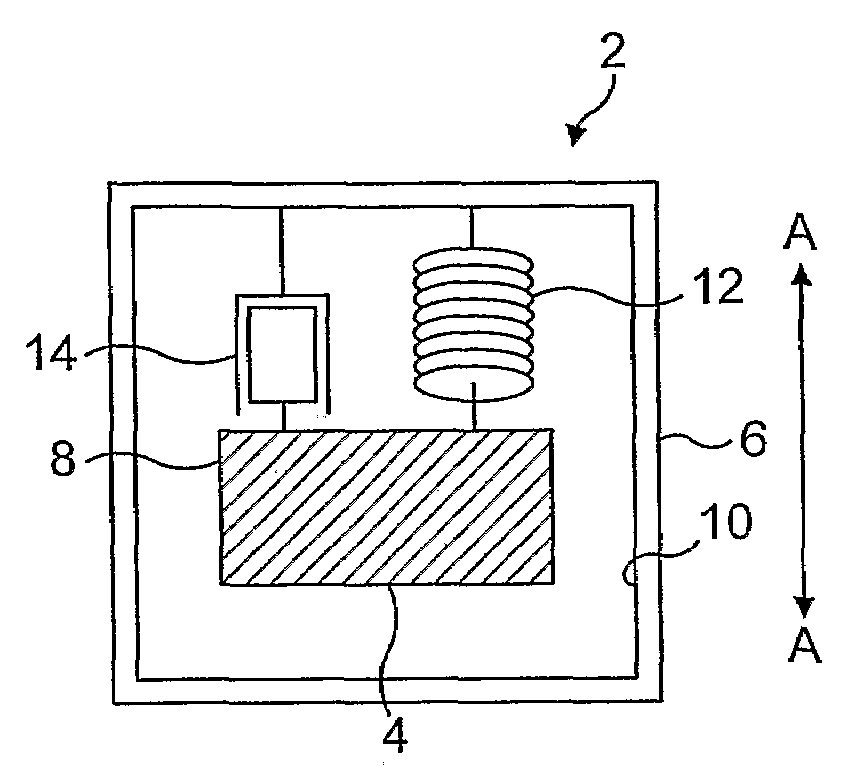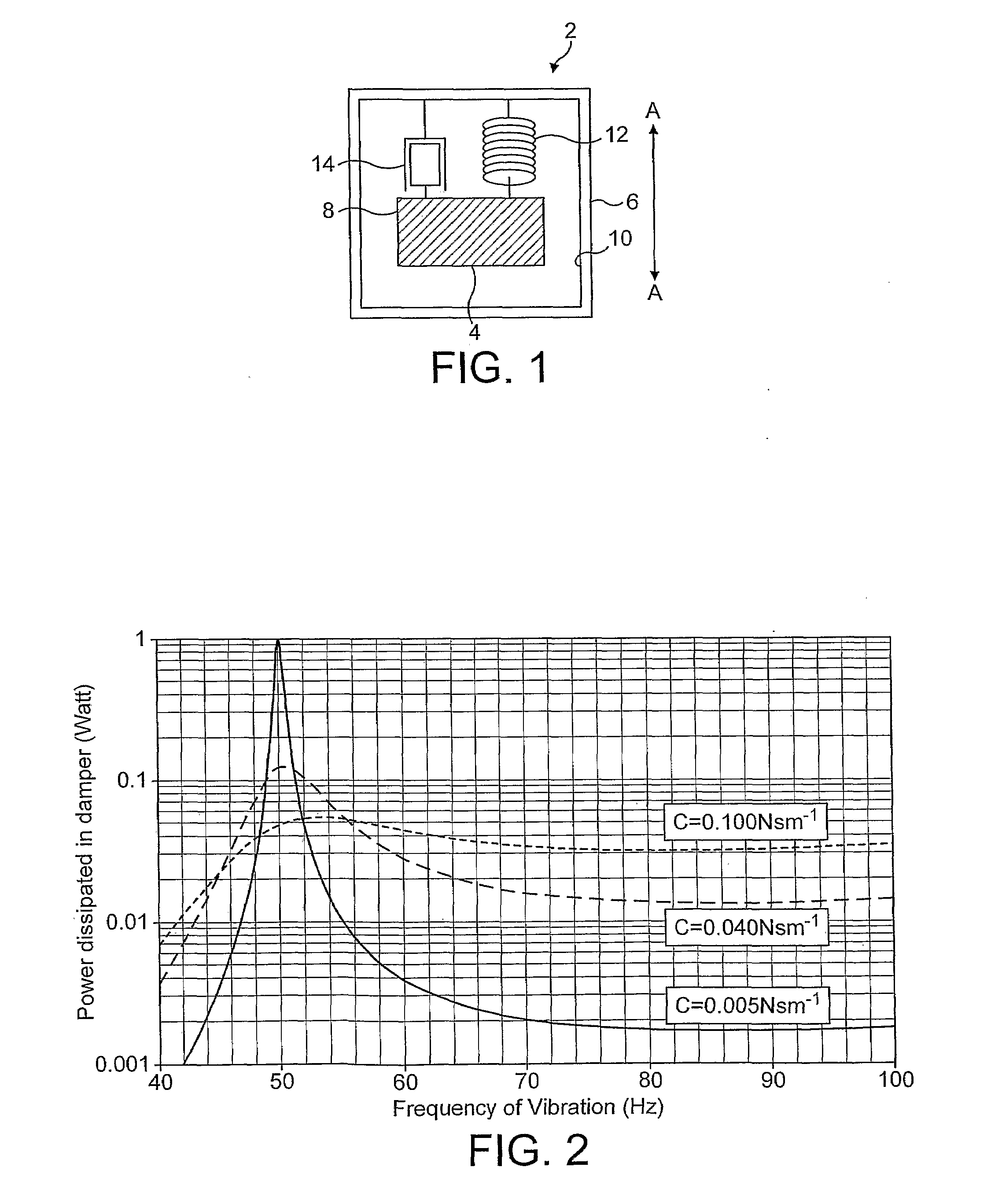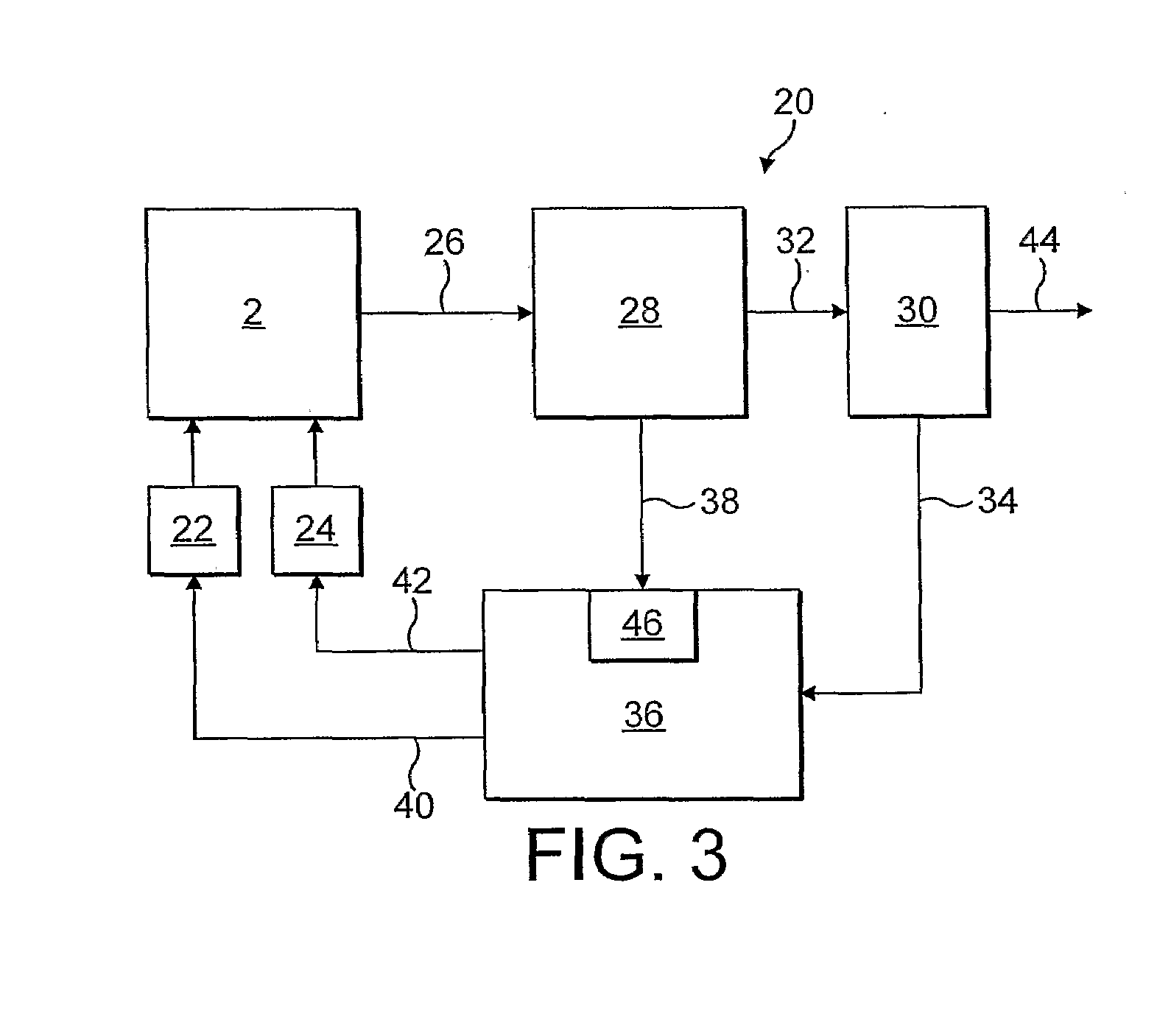Converting Mechanical Vibrational Energy Into Electrical Energy
- Summary
- Abstract
- Description
- Claims
- Application Information
AI Technical Summary
Benefits of technology
Problems solved by technology
Method used
Image
Examples
example 1
[0091]An energy harvesting device in accordance with the present invention is constructed with a variable damping coefficient and connected to control circuitry. The circuitry is designed in such a way that if the device produces more than 10 mW of electrical power then it can tune the resonant frequency of the device by means of an actuator and can tune the damping coefficient. Initially, the damping coefficient is set at c=0.1 Nsm−1, permitting an allowable start-up frequency range of from 41.6 Hz and extending to much higher frequencies for producing the required 10 mW output. Nevertheless, once tuned the device would produce relatively low output power. Therefore the damping coefficient can be reduced to c=0.005 Nsm−1 so as to be able to produce a maximum peak output power with the resonance aligned with the vibration source. Therefore, it is clear that optimum power output can reliably be achieved by utilizing the ability to tune both resonant frequency and damping coefficient....
PUM
 Login to View More
Login to View More Abstract
Description
Claims
Application Information
 Login to View More
Login to View More - R&D
- Intellectual Property
- Life Sciences
- Materials
- Tech Scout
- Unparalleled Data Quality
- Higher Quality Content
- 60% Fewer Hallucinations
Browse by: Latest US Patents, China's latest patents, Technical Efficacy Thesaurus, Application Domain, Technology Topic, Popular Technical Reports.
© 2025 PatSnap. All rights reserved.Legal|Privacy policy|Modern Slavery Act Transparency Statement|Sitemap|About US| Contact US: help@patsnap.com



